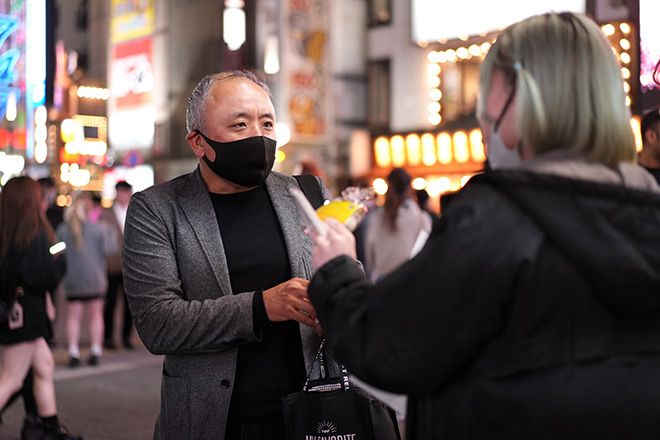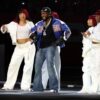It’s a familiar story, told by prostitutes the world over: A lousy childhood, a yearning to be loved and sizable debts, to be paid off the only way they know how, by streetwalking.
“I handled up to five to six men a day for 15,000 yen ($99) to 30,000 yen a time,” said a 20-year-old woman who refers to herself only as Uru.
She would solicit customers on the streets around Okubo Park in the seedy Kabukicho red-light district of Tokyo’s Shinjuku Ward.
And that was her life until a year ago.
URU’S STORY
Uru never knew her parents. Within days of her birth, she was bundled off to a care home in Kanagawa Prefecture, close to the capital. She lived in an orphanage there, and elsewhere, until she turned 18.
Uru arrived in Kabukicho in summer 2022. She started frequenting a gigolo club, where women pay lavishly for the company of suave male hosts and often shower the objects of their desire with expensive gifts.
Her spending ballooned so drastically that Uru eventually owed 500,000 yen to the club operator.
Desperate, Uru began roaming the streets to turn tricks. She tried to convince herself she “could do everything for my favorite” companion at the club.
“I was always lonely,” she explained. “I wanted someone to love me.”
NOW AND THEN
Last November, Uru was stopped on the street by a another woman who offered her a heat pad to ward off the evening chill.
The back of the package bore the words “Rescue Hub,” the name of a nonprofit group, along with contact information and support details.
Uru told the Rescue Hub member that she needed cash to find a place to stay overnight. The woman took her to Arata Sakamoto, who runs the group.
Sakamoto, 52, arranged for Uru to receive money at an assistance center nearby, ensuring she could stay off the streets for the night.
“You can contact us anytime,” Sakamoto told Uru. “This support center will always welcome you.”
But even after this encounter, Uru still kept turning tricks. But Sakamoto did not give up on Uru.
Gradually, Uru started to share her life story with Sakamoto.
She talked about the times she cut her arm with a utility knife during her junior high school days, although her memory of why she self-harmed was forgotten. Uru also told Sakamoto she was diagnosed at a medical center as suffering from a mental disorder, which causes her to black out temporarily when overly stressed.

Uru talked about her life in depth, and conveyed her desire to Sakamoto to lead a stable existence.
“It was the first time anyone had offered me such extensive help,” Uru told The Asahi Shimbun in an interview. “I began longing to be in a position to provide support to others at some point in the future.”
With her new-found motivation, Uru decided to quit as a sex worker.
She is now trying to find a hospital that can help her with her psychological condition and is thinking about entering a group home so she can lead a stable life.
The number of sex workers caught this year for soliciting customers on the streets of Kabukicho in violation of the Anti-Prostitution Law reached 80 by September. The figure is far higher than in past years.
Noting the uptick, series of private-sector initiatives are in the works to help streetwalkers quit prostitution while taking their individual circumstances into account.
The government is also doing its part by offering programs to support needy women.
GRASS-ROOTS CAMAPAIGN
Members of Rescue Hub are still patrolling Kabukicho. They talk to troubled women and distribute wet wipes or heat pads, depending on the season.
If these women voluntarily reach out to Rescue Hub, the group will spare the time to listen to their stories. Those wanting to start afresh are referred to local government welfare counters or medical institutes, depending on their situation.

Rescue Hub has helped more than 3,000 women and remains in constant contact with 20 or so. A continuing problem is that many women cut off contact abruptly. Only around five women succeeded in living on public assistance in fiscal 2021.
“Those who spend less time in Kabukicho are more apt to embrace support,” Sakamoto noted.
The government is trying to do its part, too.
A revision to the 66-year-old Anti-Prostitution Law that is due to take effect in April focuses more on human rights aspects of the problem and ensuring the well-being of needy individuals.
Chizuko Hori, a professor of welfare studies at the social work research department of Josai International University, explained a flaw in the current Anti-Prostitution Law.
“Abuse, sexual exploitation and other background stuff affecting women were not taken into account in an exhaustive fashion,” Hori said. “As a result, many women failed to get proper aid.”
The new system will bolster assistance for women plagued by abuse, domestic violence, poverty and other difficulties, but still regard prostitution as illicit.
It will become mandatory for prefectural governments to set up specialized centers to provide counseling and support to women in need of places to live. They are expected to act aggressively rather than passively wait for troubled women to stop by.
Hori said it it essential to give the new legislation teeth.
“A close watch must be kept to ensure public organizations will fulfill their responsibility in protecting women’s rights and helping them recover both mentally and physically,” she said.
This post was originally published on this site be sure to check out more of their content.








